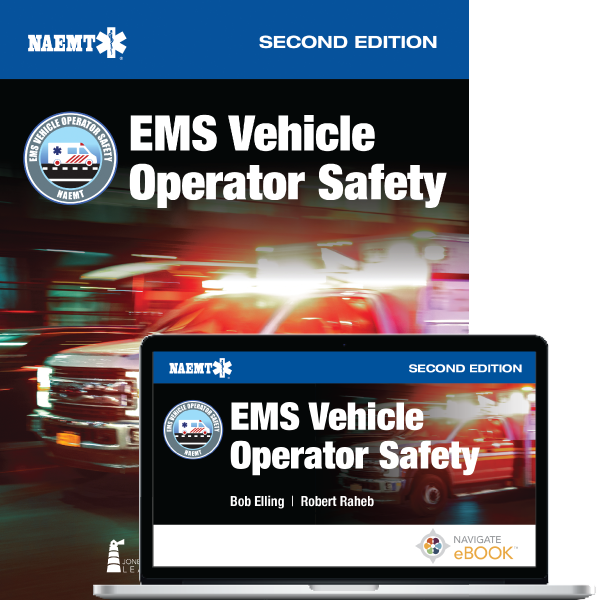Ground ambulance crashes are the leading cause of work-related deaths for EMS professionals. In fact, NHTSA reported that from 2012 to 2018, nearly all ground ambulance crashes (92.6%) involved ambulance operator/driver error. Every year, thousands of emergency medical services (EMS) vehicle collisions cause significant property damage, injury, and death, underscoring the need for dedicated EMS vehicle operator training. To meet this need, the Jones & Bartlett Learning Public Safety Group partnered with the National Association of Emergency Medical Technicians (NAEMT) to develop a comprehensive course for EMS practitioners who operate ambulances and other emergency response vehicles.
Now EMS Vehicle Operator Safety (EVOS), Second Edition, addresses the vehicle operations and transport safety knowledge gaps that lead to injury and death. Built on current research and featuring discussions of actual crashes and common driving scenarios-and the lessons that can be learned from them-it challenges emergency vehicle operators to learn how to arrive at a scene safely. The course manual profiles real-life incidents and provides practical safety strategies, emphasizing the critical safety principles that are needed to transform a culture of dangerous driving habits into a culture of safety.
Incorporating the Latest Research
The second edition incorporates valuable new research to make the text and NAEMT course the most current, comprehensive resource available to teach safe driving techniques for emergency vehicle operators today. Instructors will want to incorporate this new, evidence-based content into their training:
- The lights and siren paradigm shift
- How the increase in distracted drivers impacts emergency vehicle safety
- Why Traffic Incident Management is essential now
- Reconsidering the "golden hour"
- How qualified field training officers make a difference in training effectiveness
- The role of work-related fatigue in EMS and how to prevent it

